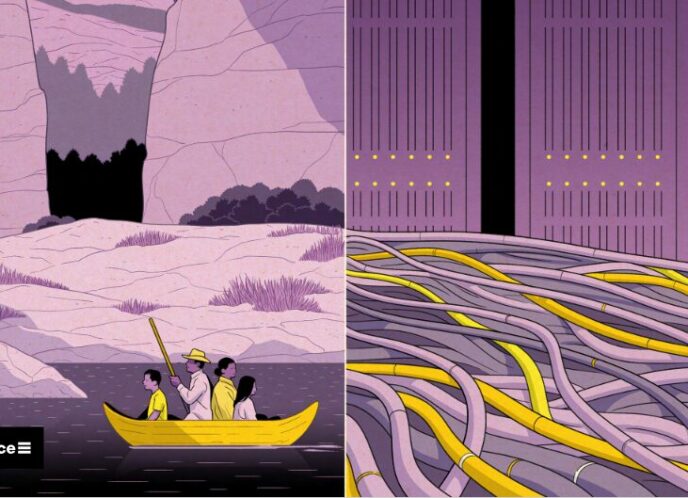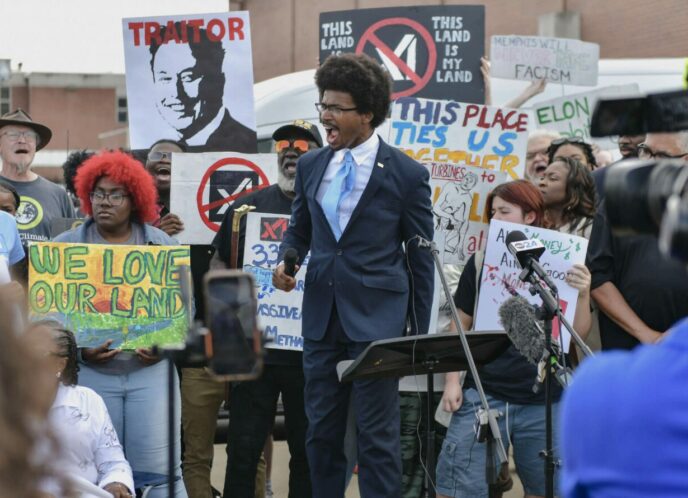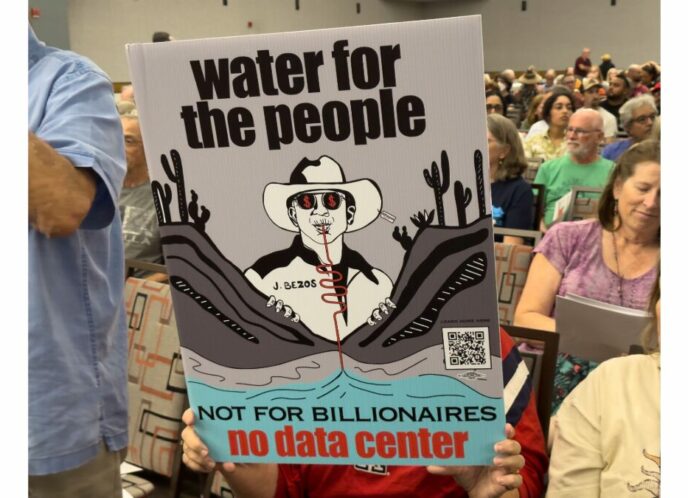Founded in 1981, ARC is a racial justice think tank that is focused on giving people a voice through research and creative technology initiatives. They “investigate[s] the hidden racial consequences of public policy initiatives and develops new frameworks to resolve racially charged debates. With offices in New York, Chicago, and Oakland, we have three programs that serve these ends: Media and Journalism, Strategic Research and Policy Analysis, and the Racial Justice Leadership Action Network.”
ARC makes creative use of media and journalism to gather stories that inspire people into action in support of racial equity, rooted in strategic research and policy analysis. Their work serves as a foundation, providing both reports and tools to help groups move beyond inspiration to mobilized action. The Facing Race Conference brings these sectors together in a biannual event.
Evidence of ARC’s commitment to film and other media is evidenced by this year’s film screenings at the conference. Films shown included: 2,501 Migrants, By Yolanda Cruz; Youth on the Dividing Line: Life in Tucson, AZ, By Barni Axmed Qaasim; Land of Opportunity, By Lusia Dantas; A Village Called Versailles, By S. Leo Chiang; and Brick by Brick, By Bill Kavanaugh/California Newsreel.
This year’s Facing Race speakers were dynamic. The Keynote Plenary, Race Talk in Real Time:Teachable Moments for the Masses and the Movement was presented by an animated Melissa Harris-Lacewell, Associate Professor of Politics and African American Studies at Princeton University. She is also widely published and a frequent commenter on MSNBC. Following her remarks there was a diverse panel who engaged Harris-Lacewell on the topic.
The Media Plenary, Covering Race / Uncovering Racism: New Media Innovations for Revealing Realities was moderated by Latoya Peterson of Racialicious. The presenters included Kai Wright from Colorlines.com; Tracy Van Slyke; from the Media Consortium; and, Veronica Arreola of Girl w/Pen. They discussed how the mainstream media continues to ignore and dismiss the persistence of racism and the how rapidly changing media landscape poses new challenges and opportunities for reshaping public awareness.
One highlight breakout session was focused on media: Policy for the People: Changing Media Rules to Transform Structural Racism. This session focused on how 24 million Americans, mostly poor, rural, migrants and people of color, lack broadband internet access. As one of the presenters, we talked about the convergence of media as our nation undergoes massive communications restructuring. With jobs in key sectors increasingly moving online, race and income gaps are being exacerbated. Several of us discussed how to close the digital divide and issues surrounding net neutrality, and how grassroots organizations are working to build transformational public policy that includes "rights, access, and power" for marginalized communities. This event was moderated by Amalia Deloney of the Center for Media Justice. Panelist Joe Torres of Free Press spoke on Latino access issues and explained that “media policy matters,” because it gives us control of our own representations in the media. Chance Williams of the Media and Democracy Coalition spoke about media policy and net neutrality work at the DC level. Betty Yu from the Center for Media Justice gave an overview of organizing in Chinese communities and how texting, the one primary form of communication in the community, was difficult because of language barriers and inadequate keypad characters. This author presented on Tribal issues related to broadband connectivity in Indian Country.
For those of us working in racial justice and media policy, the highlight of the conference was the final speaker, FCC Commissioner Mignon Clyburn. Malkia Cyril from the Center for Media Justice gave a rousing introduction citing that 98 million in this country lack access to broadband and that lack of access is a reflection in the gap in wealth, not a digital divide. Further, that lack of access is evidence of systematic racism. Following Cyril’s introduction, Commissioner Clyburn took the stage. She promptly abandoned her proposed speech on the world of media policy, and engaged the audience in a storytelling event. She told a personal story about herself and her family, bringing it back around (in a very traditional storytelling way) to bear on the issue of access to a free and open internet. Please view the video of the event here.
Having never been to this conference, but having an extensive background in racial justice issues and media policy, I can say this is one of the best conferences around. Not only was the conference diverse in terms of the population and topic, it was diverse in the vast topics and mediums of presentation. The various breakout sessions and their presenters were extremely competent, with work rooted in their respective communities and founded in academic rigor. This combination makes for a great presentation and a powerful foundation to a movement. In the words of Malkia Cyril, net neutrality is a bill of rights for self representation through the media for communities of color.
—
By Traci L. Morris, a member of the Chickasaw Nation of Oklahoma, has a PhD in American Indian Studies and is the owner of Homahota Consulting. Her background includes National and State level policy analysis; specializing in telecom and communications policy. Morris has worked with tribal communities in Arizona and was part of the Napolitano Administration in the Arizona Governor’s Office at the Arizona Commission of Indian Affairs. Additionally, she has done community outreach, resource development, planning, training and technical assistance, coalition building, grant writing, grant management, database management, analysis and interpretation of data, and report writing.



